
Spesso sentiamo parlare di intelligenza artificiale e machine learning, e la percezione comune è che integrare queste tecnologie nella propria attività sia complicato e poco immediato. Sebbene sia vero che l’implementazione di tali tecnologie richieda abilità tecnologiche significative e non sia affatto semplice, è altrettanto vero che oggi sono disponibili molti strumenti potentissimi, spesso gratuitamente, che possono portare la tua attività a un livello successivo.
”Il machine learning è una forma di intelligenza artificiale che consente ai computer di apprendere dai dati. Questa capacità permette loro di riconoscere schemi e formulare previsioni o prendere decisioni basate su tali dati.
Oggi voglio parlarti di un tool di machine learning sviluppato da Google per Google Sheets: Simple ML for Sheets. Questo strumento ti consente di utilizzare il machine learning sui tuoi dati per effettuare previsioni su valori mancanti, individuare valori anomali e predire valori futuri, senza la necessità di essere un esperto di algoritmi.
Installazione
Accedi a questo link oppure al marketplace dei componenti aggiuntivi di Google Sheets da un qualsiasi foglio di Google. Clicca sul menu “Estensioni”, seleziona “Componenti aggiuntivi” e poi “Scarica componenti aggiuntivi”. A questo punto, cerca l’estensione “Simple ML for Sheets” ed installala.
Per iniziare a usare Simple ML for Sheets, accedi al menu “Estensioni”, clicca su “Simple ML for Sheets” e poi seleziona “Start”.
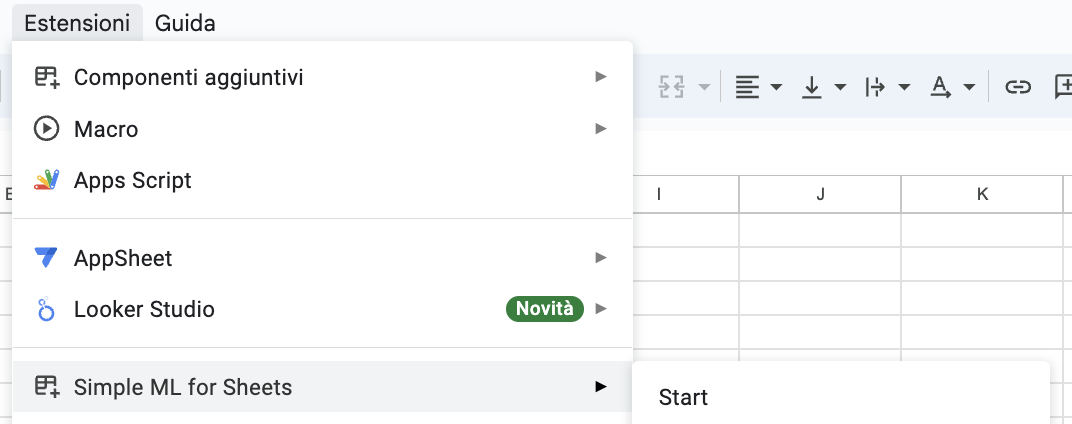
A questo punto, si aprirà una barra laterale e potrai iniziare a sfruttare tutte le potenzialità del machine learning.
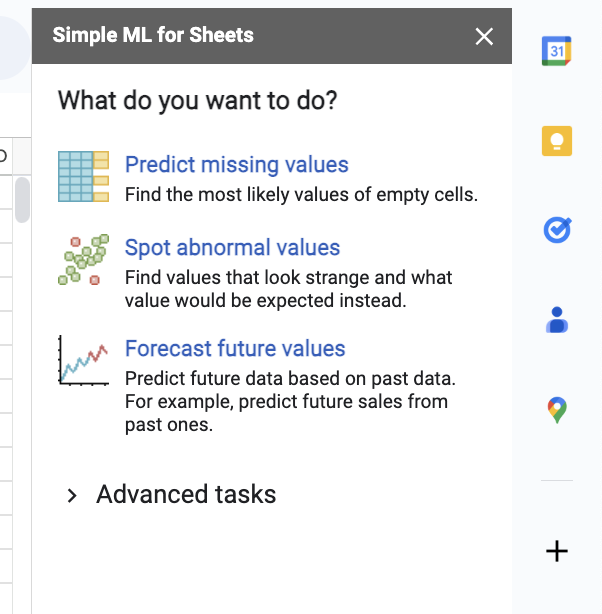
Prima di iniziare
Questo componente aggiuntivo utilizza una formattazione dei dati in stile statunitense. Pertanto, se il tuo foglio di Google utilizza impostazioni internazionali diverse, come quelle europee, devi impostare le impostazioni internazionali su Stati Uniti per evitare errori durante l’utilizzo del componente aggiuntivo.
- Clicca sul menù “File”
- Clicca su “Impostazioni”
- Su Impostazioni internazionali seleziona “Stati Uniti”
- Salva
Predirre valori mancanti
Ho creato una tabella con prezzi fittizi di case e alcuni dati come superficie, numero di stanze, numero di bagni, anno di costruzione e zona. L’unico valore mancante è il prezzo di una casa. In questo caso, l’algoritmo di machine learning stimerà il prezzo della casa basandosi sui dati disponibili delle altre case.

Accedendo alla barra laterale di Simple ML for Sheets, clicca su “Predict missing values”. L’algoritmo avrà già individuato il valore da predire. In caso contrario, potrai selezionare autonomamente sia la colonna contenente il valore da predire (column with empty cells) che i fattori da considerare per addestrare il modello di machine learning (source column).
A questo punto, potrai selezionare l’algoritmo da utilizzare e cliccare su “Predict” per ottenere i valori mancanti.
N.B. Questo esempio è basato su 10 righe, maggiori saranno i valori e maggiore sarà l’accuratezza dell’output.
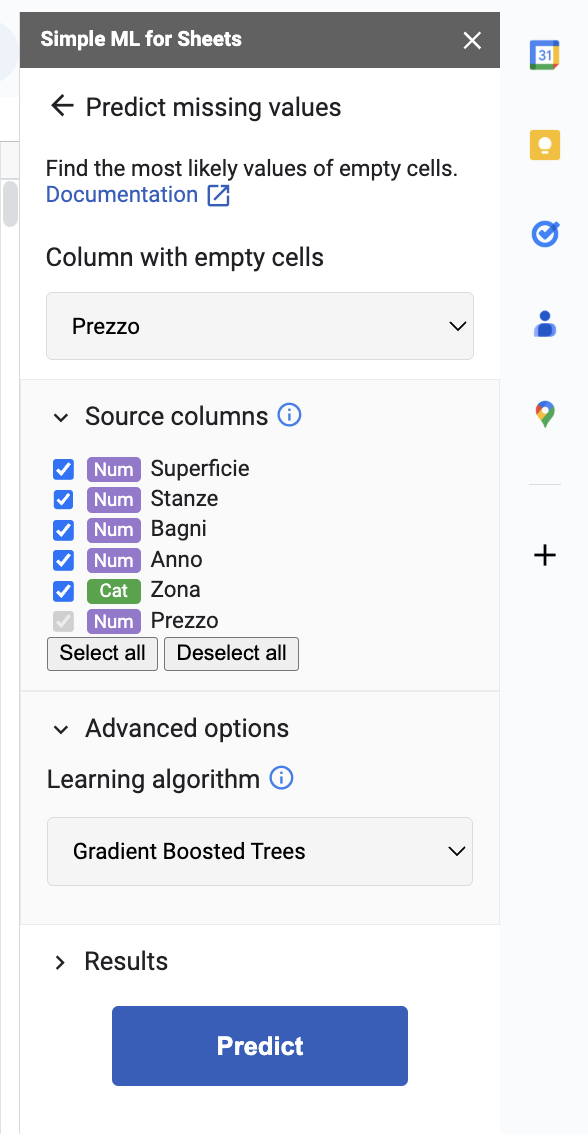
Una volta completata la predizione, verrà creata una colonna contenente i valori predetti.
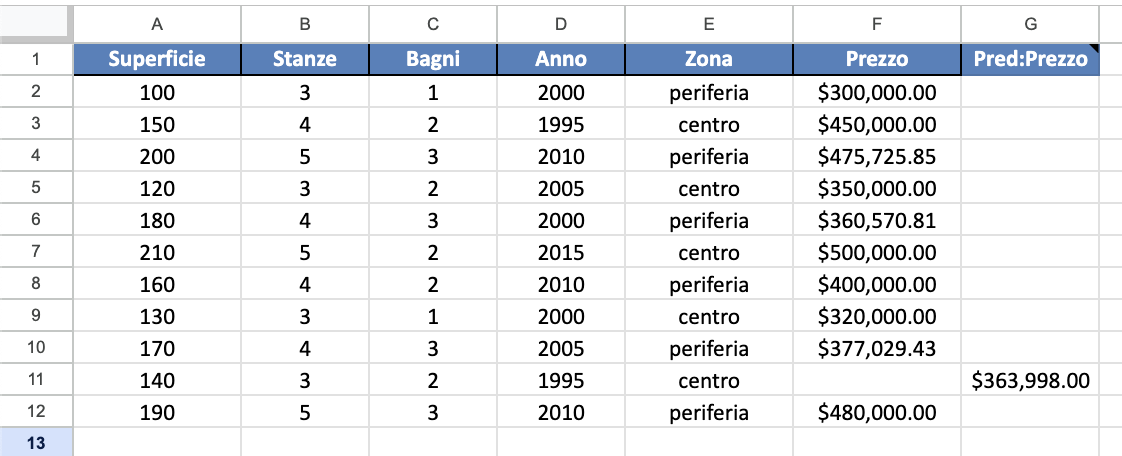
Individuare valori anormali
In statistica, gli “outlier” sono valori anomali che si discostano significativamente dagli altri dati. Individuarli è fondamentale per garantire l’accuratezza dei dati, migliorare le analisi statistiche e prendere decisioni informate.
Nella barra laterale di Simple ML for Sheets, selezionando “Spot abnormal values” potrai identificare i valori anomali. Ad esempio, nel caso delle case, ho impostato il prezzo di una casa nettamente superiore alla media degli altri valori.
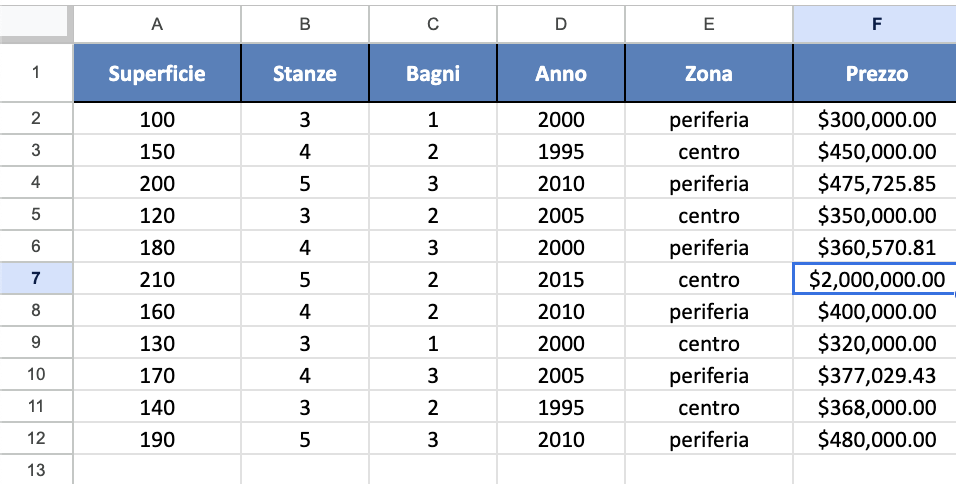
A questo punto, come per la predizione dei valori mancanti, devi selezionare la colonna in cui cercare il valore anormale (Column with abnormal values) e indicare le colonne che influenzano la determinazione del valore da cercare (Source columns). Tutte le colonne non selezionate verranno escluse dall’addestramento del modello di machine learning per individuare l’outlier.
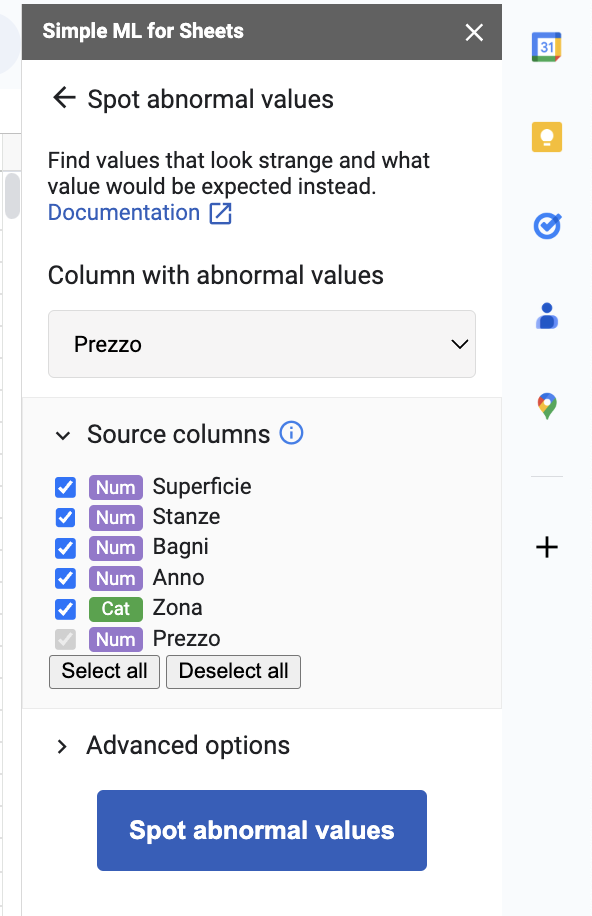
Cliccando su “Spot abnormal values”, l’algoritmo genererà due colonne: la prima colonna restituisce un valore compreso tra 0 e 1, dove 0 indica che il valore è normale e 1 che il valore è anormale; la seconda colonna indica il valore più probabile secondo l’algoritmo. In questo caso, il nostro outlier è stato classificato come anormale all’80% e il suo valore più probabile è di 424.000 dollari.
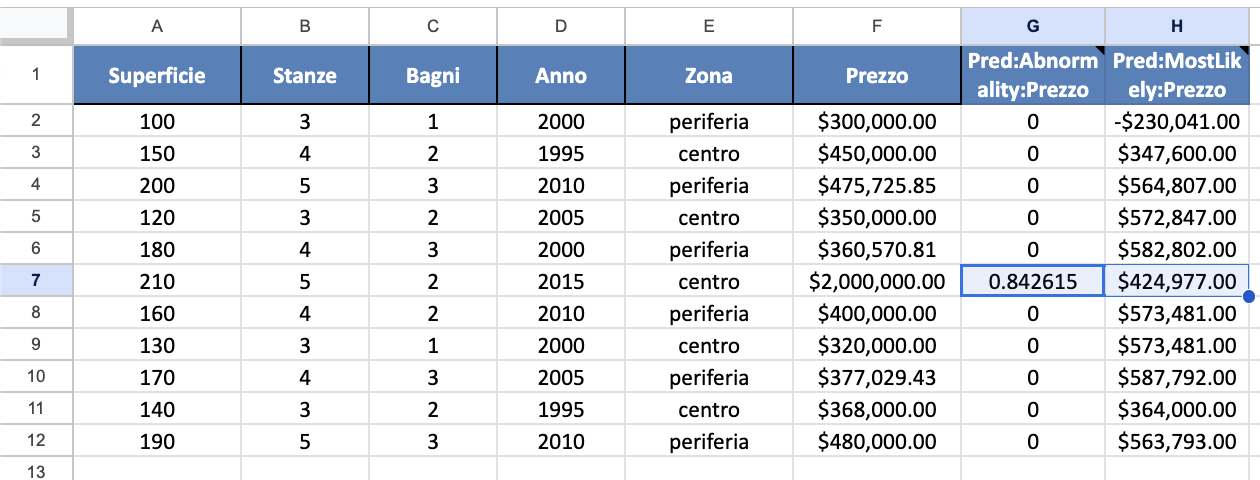
Predirre valori futuri
Questa casistica è particolarmente interessante e leggermente più complessa rispetto alle precedenti, poiché l’algoritmo richiede ulteriori dettagli.
Nella barra laterale di Simple ML for Sheets, selezionando “Forecast future values” puoi ottenere previsioni sui dati futuri basati sui risultati storici raccolti finora. Per esempio, ho creato una tabella con dati fittizi di vendite ipotetiche per un determinato periodo di tempo, lasciando non compilato il valore delle vendite in alcune righe, che rappresentano appunto i valori che voglio predire.
In questo esempio, abbiamo le seguenti colonne: date, numero di vendite, prezzo, numero di campagne promozionali effettuate, stagione ed eventuali eventi speciali.

In “Columns to forecast”, indica le colonne che desideri predire; in questo caso, ho selezionato la colonna “Prezzo”. Successivamente, se non sei un esperto di machine learning, ti consiglio di impostare le opzioni avanzate come mostrato nell’immagine sottostante. In questo modo, l’algoritmo potrà scegliere gran parte dei parametri in autonomia, basandosi sul dataset.
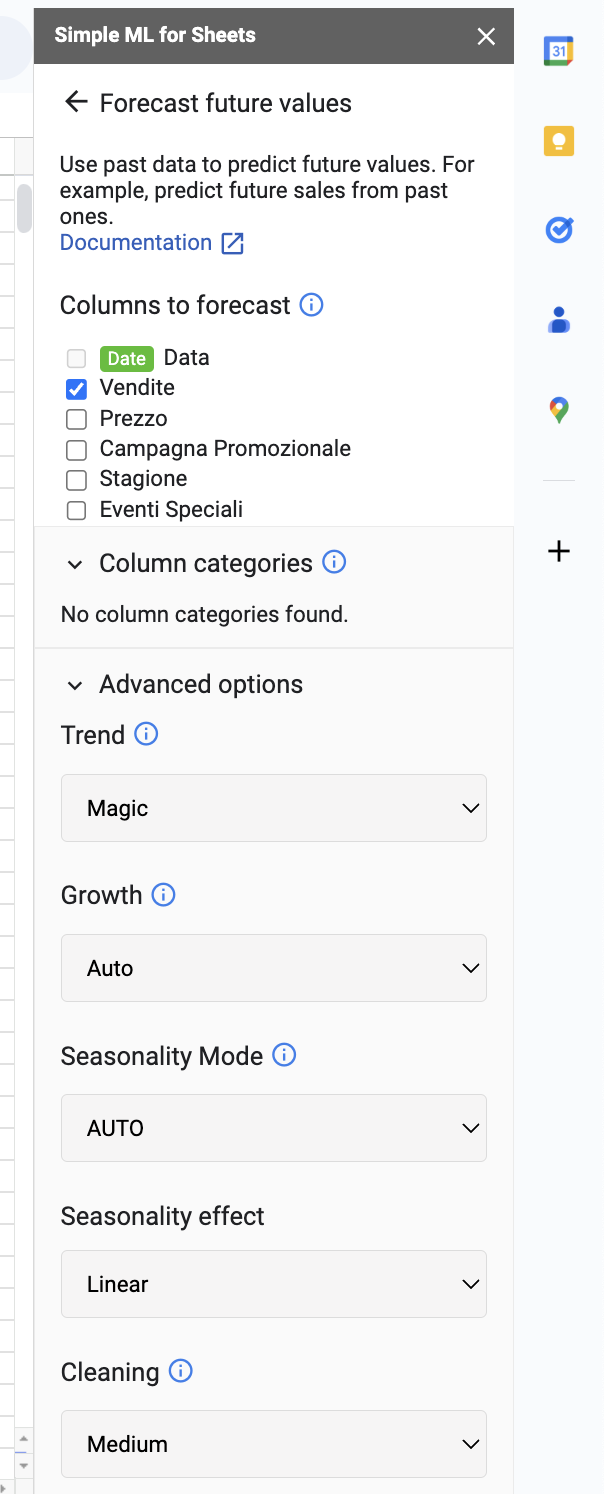
Un ultimo valore su cui è importante fare attenzione è il campo “Holiday”. Dal menu a tendina, seleziona la regione da cui provengono i tuoi dati: se i dati sono a livello globale, scegli “Global”; altrimenti, seleziona la regione appropriata. Nel mio caso, ho scelto “Europe”.
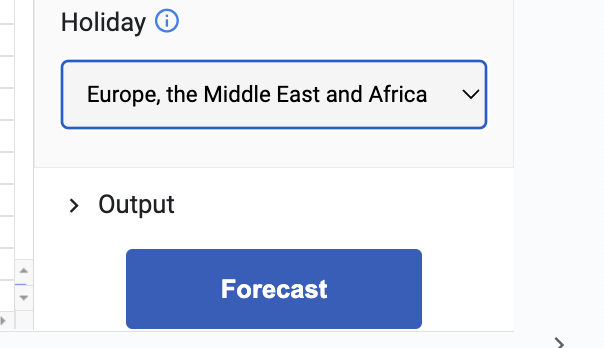
Una volta cliccato su “Forecast”, verrà generata una colonna contenente i valori previsionali ipotizzati dal modello di machine learning.
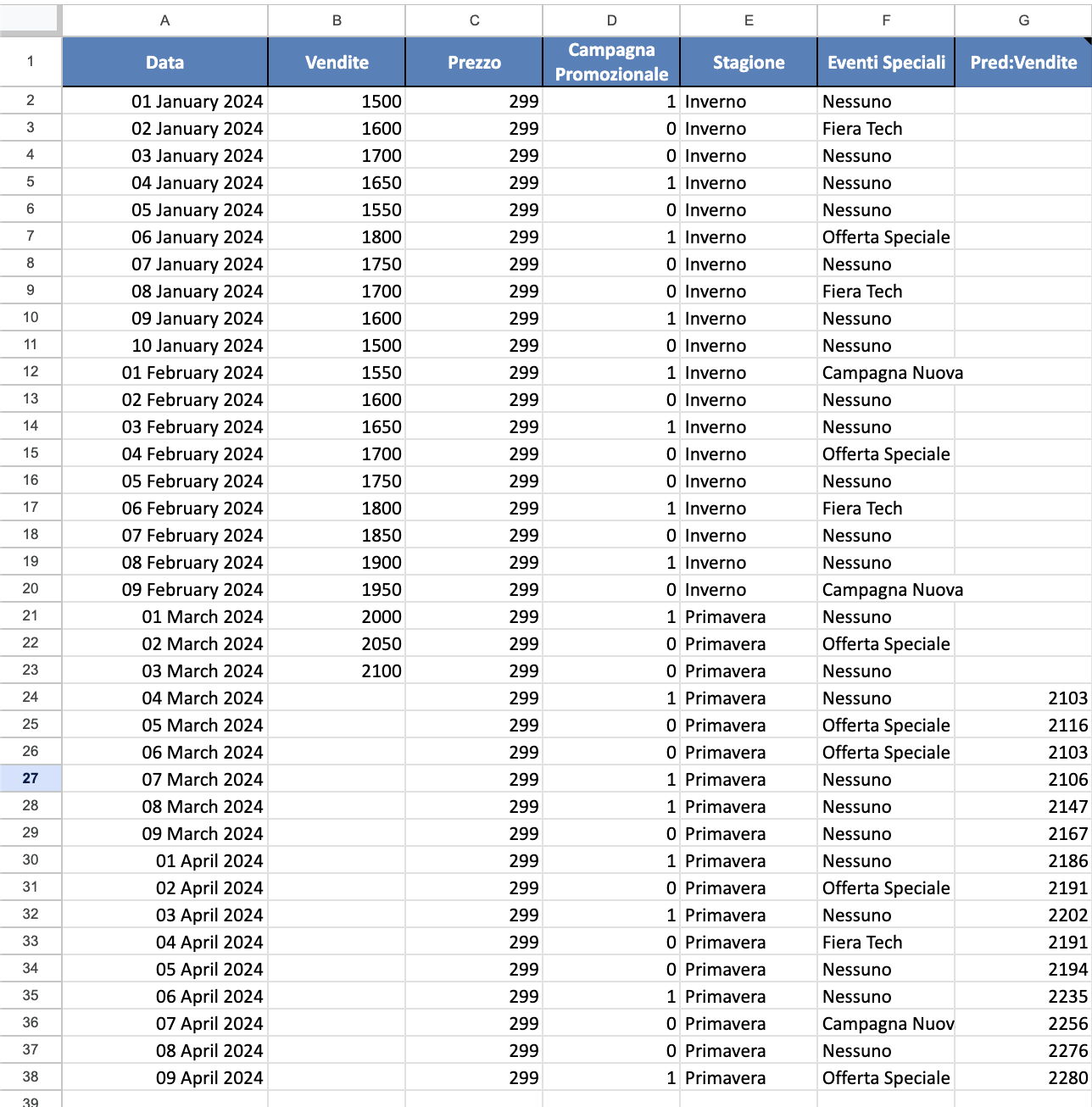
Inoltre, lo strumento genera un grafico intuitivo che mostra le vendite realizzate in blu e le previsioni di vendita in rosso. Questo ti permette di visualizzare chiaramente la predizione effettuata dall’algoritmo.
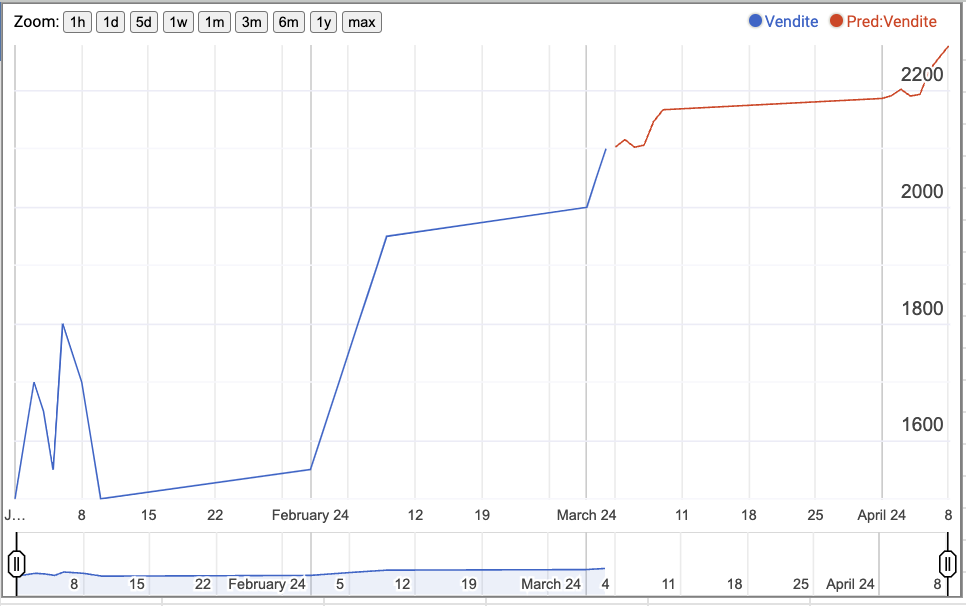
In conclusione
Come abbiamo visto, esistono strumenti molto semplici da utilizzare che possono aiutarti a prendere decisioni strategiche sfruttando tecnologie avanzate come il machine learning e l’intelligenza artificiale. Ad esempio, puoi utilizzare un database con i dati di un anno di vendite per prevedere come varierebbe il numero di vendite al cambiare del prezzo, oppure stimare il miglior prezzo da proporre per raggiungere un determinato numero di vendite. I casi di utilizzo sono infiniti, e la tecnologia è ormai alla portata di tutti.
Buon lavoro!